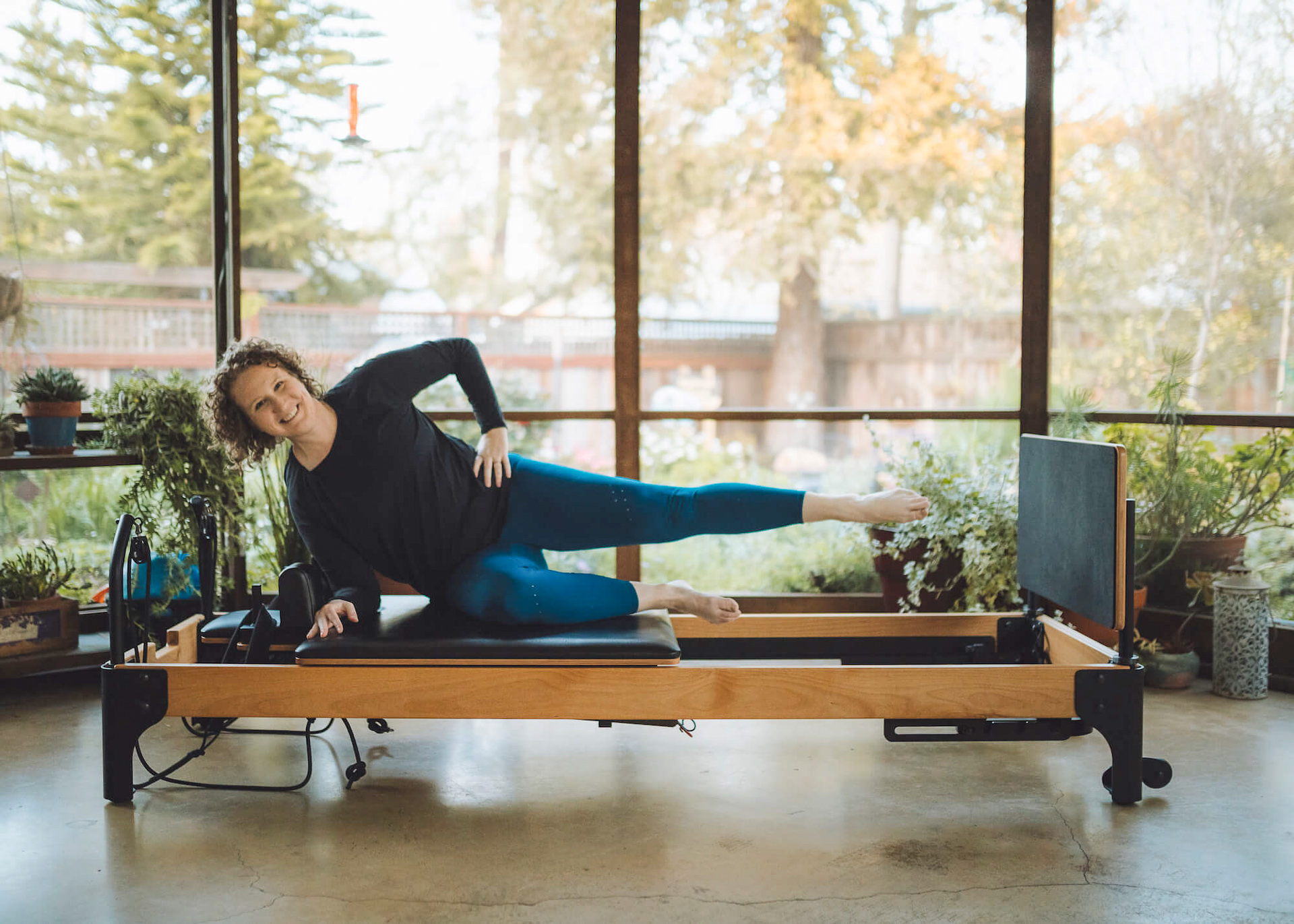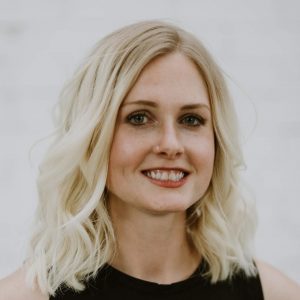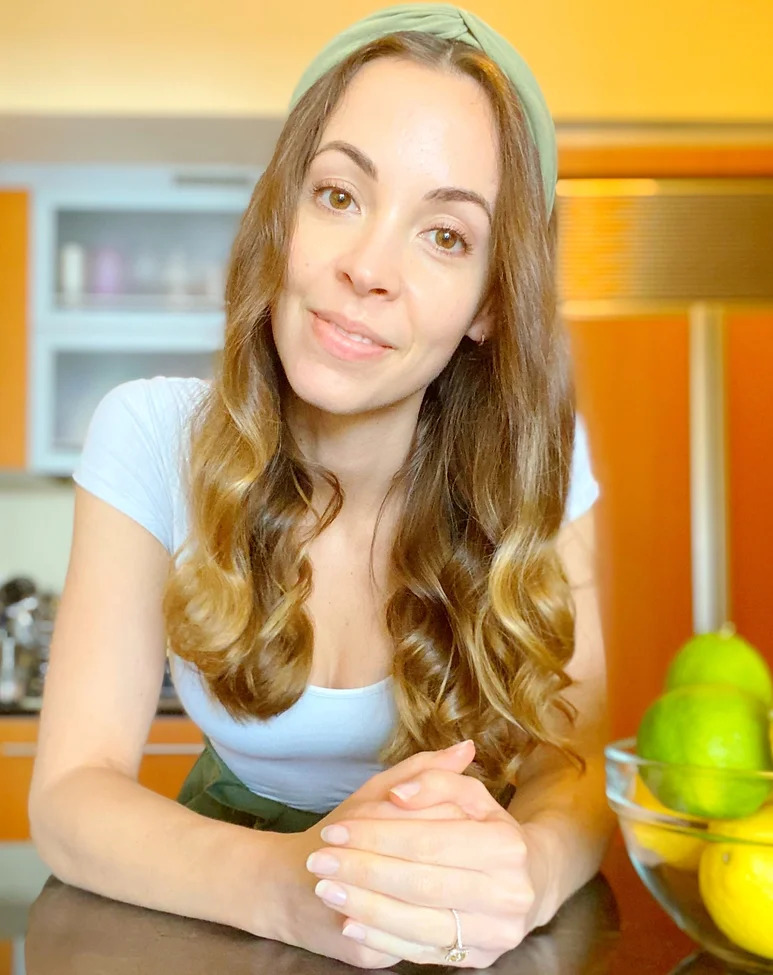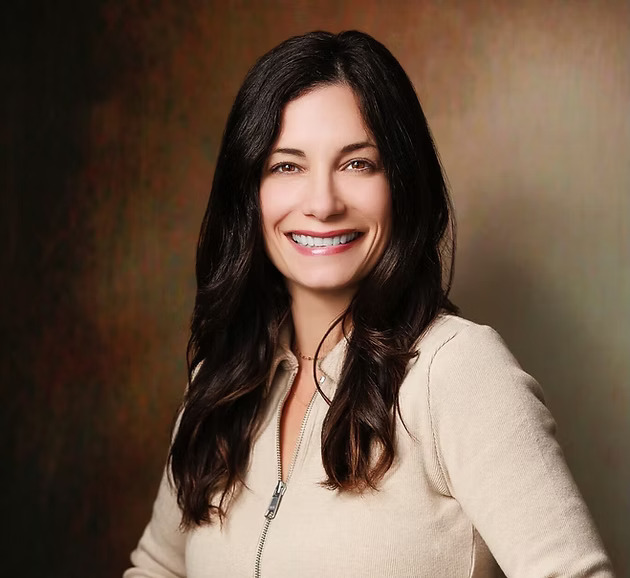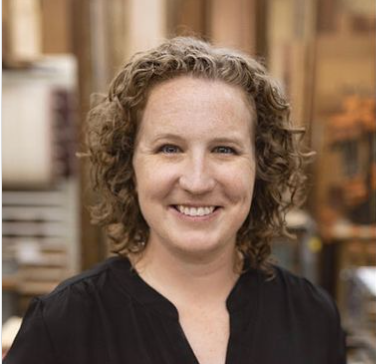
What is Flexia Pilates? – Kaleen Canevari
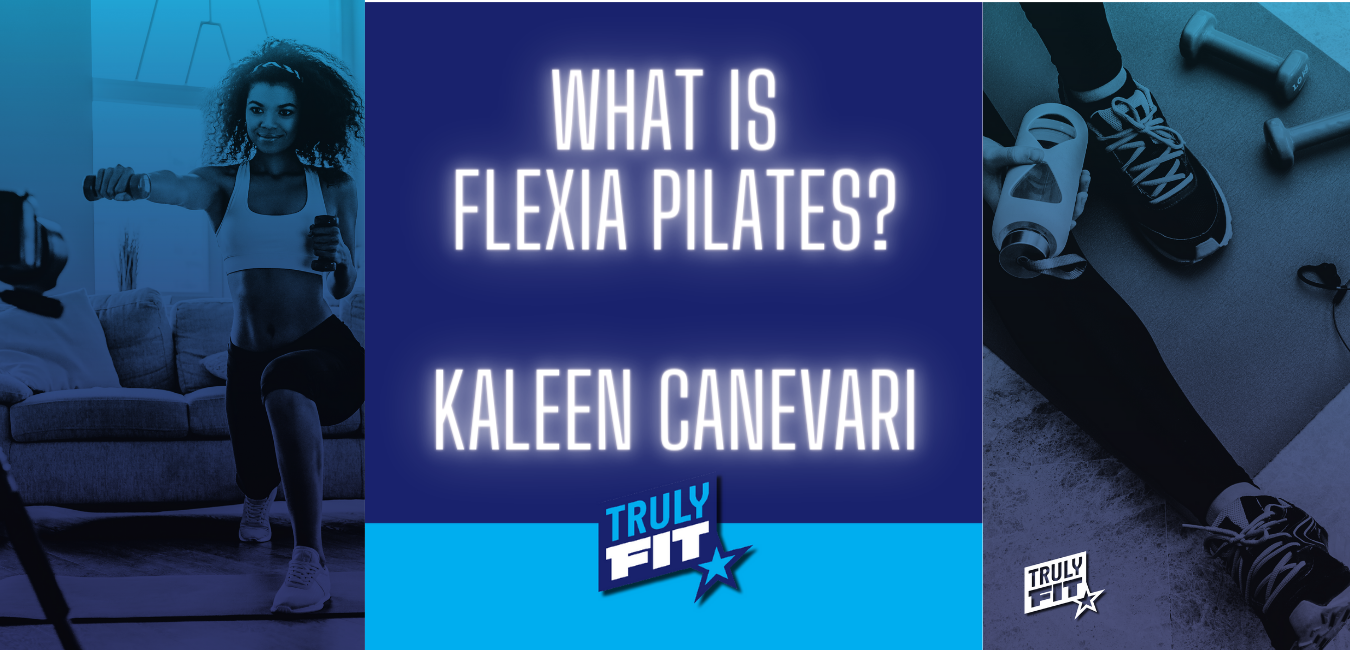
CLICK FOR AUDIO OF PODCAST
Topic: Flexia Pilates with founder Kaleen Canevari
Guest: Kaleen Canevari
Release Date: 7/18/2022
Welcome to Trulyfit the online fitness marketplace connecting pros and clients through unique fitness business software.
Steve Washuta: Welcome to Trulyfit. Welcome to the Trulyfit podcast where we interview experts in fitness and health to expand our wisdom and wealth. I am your host Steve Washuta, co-founder of Trulyfit and author of Fitness Business 101. In today’s episode, I speak with Kaleen Canevari. Who is a former mechanical engineer turn Pilates instructor turned founder-owner and operator of Flaxia Pilates.
What is Flexia? Pilates Steve? Well, it is a smart reformer. What does a smart reformer it’s a reformer that tracks your metrics through technology and data? Yes, your control your consistency, your weight, moved your speed during class. And it gives you real-time feedback so that you understand the quality of your movements.
We’re going to talk about the inception of the idea of Flexia, pilates, raising capital through investors, and the pre-launch and launch marketing strategies. A little bit of everything was a great conversation with no further ado, here’s Kaleen Canevari of Flexia Pilates. Thank you so much for joining the Trulyfit podcast. Why don’t you give my listeners in the audience a little background on who you are, and what it is you do in the health and fitness industry?
Kaleen Canevari (Flexia): Sure, Steve, my name is Kaleen Canevari. I’m the founder and CEO of Flexia. A connected fitness company that brings the Pilates studio experience into your living room with a Pilates, a smart pilates reformer, and an online studio of classes. So my background is in mechanical engineering and Pilates instruction. So I have seen it all. I’ve spent many, many years getting my hands dirty on Pilates equipment of all brands. And I’ve also spent many, many years working with clients in the studio. And both of those experiences have really brought me to where I am today. With Flexia.
Steve Washuta: I’m sure it helps to have that engineering mind to look at that. I have the opposite of the engineering mind, I couldn’t fix a door if it breaks in my house. But I have a creative mind. So because I have a Pilates background too. I’ve always looked at the reformer.
And I would sort of Google different brands, companies, and prices. Thinking I can make this way cheaper at least take the pieces and parts. That I want from what the reformer does and make this I never got to that point, right? As a creative, you have a ton of ideas, you can only stick to some of them. But is this something that sort of drove you towards designing this. Or if not what drove you towards designing your own reformer and coming up with this company Flexia.
Kaleen Canevari (Flexia): As I mentioned I’m I spent about five years running my own small business. Where I would be a technician for Pilates studios, gyms, and individuals. Who were buying a pilates reformer or other pieces of Pilates equipment. And I spent time in the studio. And across both of those experiences. The question I kept getting asked was how do I bring my Pilates Reformer experience outside of the studio? And there was no good answer that we could patch together.
You know, Pilates equipment is big. It’s intimidating. It’s confusing to use much, much, much, much less figure out which one to buy. And then when you get home, how do you use it. It’s not like getting on a bike or a rower and doing the same thing over and over again. And combine that with the fact that in the studio. I was constantly battling, whether the Reformers would actually fit many of my clients who came in the door. And so I thought, well, what much like you, there’s got to be a better way to do this.
How can we deliver the professional-grade experience. That you get in a studio outside of the studio, and make it a little bit friendlier for the home? Now parallel to that. My mother, she is a physical therapist. She’s been a lifelong active person. Hiking, backpacking, she was a lifelong swimmer. Loves to stay active and has very, very dedicated to extending her life. So that when she eventually has grandkids or whatever, she can still play with them and do the things into retirement that she wants to do. She knows Pilates is good for her. She doesn’t have to be sold on that.
But she and I together have probably tried every Pilates instructor in a 45-mile radius. To try and find one that fit her energy, her style. And we were never successful. It was never, you know, besides cost and location, you know, the energy just wasn’t right. And at the end of the day, we do a workout together. I would train her every once in a while when I was in town and she would say you know I’ve really liked this. I feel good but at the end of the workout I don’t know if I’ve actually gotten better than last time.
And you know my peloton has a number as I can at least compete with myself. Yeah. Class over class over class and my you know Oh, it made me think why isn’t there a number? And the first, the first, you know, the obvious answer is, well, we have springs. So it’s very hard to measure load because extension springs change weight depending on how far you extend them. But the second question is, in Pilates, do you actually care about the absolute load? Or do you care about other things that are happening in the reformer environment in the Pilates environment? So what do we care about? What do I spend 80% of my time teaching in a group class?
And that has a lot to do with things that we can measure. Besides load, besides a number of reps, things like control consistency distance that leads to a range of motion. How can we gather these other things that come into play. Determining whether someone is moving in the way that you’re trying to coach them to move. And so that is really where we have taken the traditional, let’s redesign the reformer, let’s make an online studio. Oh, by the way, let’s put some technology in it together. So that we can change the way that we do Pilates as a whole. And maybe make it a little bit more accessible. For people who are, as my mother would say, self-proclaimed, uncoordinated. People who don’t have a great connection with their body.
Steve Washuta: I love that because to me, that slightly challenges what I would call the Pilates status quo. Which is more of a dancey artsy background, where That’s where it comes from. So they’re looking at things like mind-body connection, and am I feeling this the way I’m supposed to? And am I, you know, am I breathing and positioning myself in the right way? But like you said, ultimately, this is exercise and exercise, there are metrics and metrics are important to know that we are advancing.
And then it’s 2022, we obviously had the pandemic, and there are things going on virtual training is here to stay, if you’re not a part of it, you’re missing out. It’s here, right? I’m not telling you, it’s the only way, of course, I prefer in-person myself as a personal trainer, but it’s here to stay, you have to have at least one foot inside of that game. Okay, if you want to be successful in this industry long term.
And in order to be in that landscape, I think you do need metrics like that because you’re not always going to be with that trainer who can see exactly what’s going on in a 360-degree range like you might be able to walk around a reformer and your client who’s doing a particular movement on that. So I love how you added that in. I think that’s absolutely fantastic.
No, no, give me what I would call a client or member or customer experience. I go online, I purchased this reformer. What happens next it gets sent to me do I build it is this coming to a large package or a small package? Am I automatically let’s say LinkedIn to some virtual classes and a subscription base just lay it all on me here.
Kaleen Canevari (Flexia): Absolutely. So when you buy the Flaxia reformer online, you get access to our online studio, which has non-reformer classes as well plus how-to videos and all your reformer classes. As your reformer shifts in route to you, you get periodic updates. And then we use a freight company that actually brings it into your home, so into the room that you want to use it in.
And they can either leave it there, or we’re working on getting white glove, maybe by the time this airs, we’ll have white glove installation. So that will be another option. If people don’t want to assemble it themselves. I do have to give a shout-out like we’ve had several customers who have said things like I couldn’t wait for my boyfriend to come home. And so I just did it myself. And it was amazing.
I can’t believe I did it. So I’m we’re really proud of the assembly process. It comes in three boxes. Now, this was really important to me, because I have heard too many horror stories of not only digging up your walls in your home but trying to bring this giant couch-size thing in that requires three people to move. But also sometimes, I think I had someone who received a reformer who couldn’t get into their front door and have to turn around and list it for sale on the US marketplace because they couldn’t even get it in their front door. So with our reformer, it ships in three boxes.
So one person can get it from the curb, in this case, a delivery driver, and get it anywhere in your house by themselves. One person can assemble it, it is very easy to maneuver in that sense. Now once you get it assembled, you connect it to Wi-Fi. You log into your online studio account, and you go through what we call a user calibration. So this is a 20 Minute sequence where we walk you through five basic exercises to show you how to find your fit. So adjust the machine to fit your body in the most common positions. And then figure out what springs are right for you.
So that when you go to your next class, you’re not looking around going, I don’t feel anything. Because as a Pilates instructor, we’ve definitely, at the moment you have those clients who come in, and you’re and you can see it on their face, and they’re like, and then you can go address them and say, like, what’s going on? I’m not sure I’m doing this, right? Oh, let me make a small change. That’s what we’re trying to do right from the get-go so that you have that really efficient kind of spot-on first workout.
Steve Washuta: I think the average person the fitness professional who doesn’t really know a lot about Pilates will have no idea what the pricing is, like for a reformer, you don’t have to give me specific prices if you don’t feel comfortable, but is it sort of commiserate or competitive with the market or is it very, very different, either in one way or the other.
Kaleen Canevari (Flexia): So we are very, very competitive in the Pilates market. We’re at the lower end of any professional-grade reformer, that’s with technology or without it even. So, huge pro there. Now, you might look at our price, if you’re familiar with peloton or hydro, and go, Oh, that’s a little bit more. Yes, it’s about comparable to say purchasing a tonal for your home. But in general, this is something that we have financing options for. And you can basically pay for itself in about a year.
Steve Washuta: Yeah, and again, for those most people are familiar with the concepts of Pilates who have listened to this podcast before because this is probably our seventh episode touching on something Pilates-related. But even for those who are not a peloton, ultimately, there’s only one thing you can do with it. With a pilates reformer, if you have a good enough instructor, which apparently I’m sure your instructors are that you’re hiring, you can do anything you can possibly dream of.
And more, it is one of the best, if not the best, pieces of equipment in the fitness industry to do whatever you need to do. And, you know, for me, I worked a lot with seniors. So I would do a lot of what I would consider strength training on Pilates equipment. I wasn’t using always like Pilates sort of jargon and parlance and terminology, I was just putting my seniors on there because it was very difficult for me to get them in a position where I can fire their quads, let’s say without them, you know, being worried about let’s say stability or other factors, right, I can just lie them down, prone and we can go through the or supine or we can go through the motions.
So let’s talk a little bit more about your reformer specifically. We have the one main differences. Number one, I imagine it’s lighter. If you’re putting it into the mail, then maybe your average reformer.
Kaleen Canevari (Flexia): It’s lighter in pieces. But it’s a piece, it’s a quality piece of furniture. it’s American hardwood, cherry, aluminum, and hand-sewn upholstery, so not something that you would you know, pick up and move around all the time, but that’s why we put wheels on it.
And you can stand it up on its end to get it out of the way when you’re not using it.
Steve Washuta: I think that’s a good thing for anyone who’s had the unfortunate experience of working with one of those like plastic aluminum, like YMCA reformers that they don’t even have a brand on them sometimes.
I mean, it’s horrible, right? You need the wood, you need the upholstery. And the proper springs obviously, do you? Did you foresee any major road bumps when designing this? Whether it was at like the sort of the factory level? Or let’s say you want it particular?
Uh, we even talked about these yet accessories that you could or could not get associated with it. And I guess you could add to that. Are you ordering accessories, let’s say like the box or a jump board, in addition to just what comes with it? How does that work?
Kaleen Canevari (Flexia): Yeah, so our reformer package includes key accessories like the box, a standing platform, and a jump board, which is not typical at all in the Pilates world. But we think those are key parts to being able to use the reformer and all of its various ways. As far as foreseen problems, I started sourcing my design at the beginning of the supply chain crisis. So no, I did not foresee, any of the things that actually happened.
We do manufacture 100% in the US right now. which has been a key part to really being able to get on the phone and troubleshoot when there are shortages of small things or questions about making bigger pieces.
So it has not been without problems. It has been a very hands-on process to get it manufactured. But I’m really proud of the way it’s turned out and proud to be learning and growing with some of our domestic partners.
Steve Washuta: Did you sort of mentally blueprint this and say, Okay, there are some musts here that I have to have? And then reach out and see piece by piece how this could go You have helped in this process? Because it seems daunting if I wanted to do this on my own right? Maybe I’m asking this because just because I’ve thought of this, what’s the what’s it? What’s the first phone call? How do you even start a process like that?
Kaleen Canevari (Flexia): I? Well, my process was a little bit backward, maybe, perhaps. But I do recommend it. This kind of ties into the marketing strategy. So I had a mental picture of what I wanted in a reformer years that had been building for years of my, my experience in the field.
I actually ran a self-hosted Kickstarter campaign in the summer of 2020, before I ever built anything, and it was all based on hand drawings. That just basically generated the interest validated the concept that I was going for, and then design that I designed in CAD.
So I’m an engineer, everything fit together in CAD, made all of the mechanical drawings that communicate with the suppliers, worked with local partners to get them, and actually physically build the first one myself.
And that’s the very first one we ever built, it was in photoshoots, it looks nearly identical, you wouldn’t be able to tell the difference from what we have out there today. From there, that’s when the real difficulty started with figuring out who’s a good partner. I will say that there are a lot of challenges.
And there were a lot of challenges at the time like I said, a lot of promises made and undelivered, and sometimes, through no fault of theirs. It was just the state of the world at that time. Sure. But definitely stressed my communication, and grew my communication skills. And that is along a parallel path of really growing the team and figuring out, okay, let’s go from one person to three people then to five people, and how who’s going to take on what and how is all of the reasoning for why certain parts are exactly the way they are with the right material and the right sizes.
That was all in my head. But I’m all out here pitching investors and doing all this other stuff. So the communication aspect of this was immense, immense, but again, really, really fortunate that that engineering knowledge was basically in a house with me, which saved us millions of dollars in development costs by using than using an outside firm.
Steve Washuta: It sounds like a daunting task Better you than me. But I do think this sort of engineering thing going on here with you is almost like a marketing wrong unto itself. I think it’s such a cool story, to have somebody from that background, be able to fuse that with the pilates and say, I see a problem, I fixed a problem.
I created this whole new sort of, you know, side branch off of Pilates, I really think that in itself could be sort of a great marketing thing down the road. But let’s talk a little bit more about marketing.
I know that you’ve had a special pre-launch strategy, you might have just hinted on a little bit in order to garner some more interest and maybe even finances, talk about why you decided to do that and how that all takes apart.
Kaleen Canevari (Flexia): One of the big reasons well, there were two big reasons for doing this first. The first one was I wanted to raise money, I had never been in on a venture-backed or taken on investment funds. And I knew this whole process would take time developing launching a product time and money. And I couldn’t really get anyone to take me seriously.
There’s this catch-22 in fundraising, especially in early, excuse me, early stage companies where it’s like, you talk to an investor and they go, well, where’s your traction? You go, well, I need money to get traction. They’re like, why am I giving you money till you have traction? And so it’s like, Well, where am I right? What came first chicken or the egg?
Steve Washuta: Yeah, it’s like everyone who tries to apply for a job and they’re like, do you have six to 12 years experience? You’re like, No, I just came out of college. Nobody has six to 12 years of experience. Yeah,
Kaleen Canevari (Flexia): exactly. Exactly. Doing this was a way to prove one, or sorry, doing this was a way to one generate funds to complete the rest of the process. To also prove that there was a demand that people were resonating with the messaging and the premise that I was building this company off of. That was important for me personally, to make sure I’m not done. illusional, and in my own little world.
It was also really important for outside investors, it’s one of the main reasons that we were able to get into a certain startup accelerator program and make a whole bunch of new connections in the sports tech world. Because we had done this legwork. Super kind of guerilla style of, hey, let’s prove that there’s demand for this.
Steve Washuta: What do you think they were the most interested in? Was it like, a number of impressions, was it the total money raised, was there something that they were trying to tell you like this? This is a must in this process? Or did it really just depend on the investor?
Kaleen Canevari (Flexia): It depended on the investor. And it really depends on how the founder, myself, tried to paint the picture. So in early-stage companies, investors bet on the team and the people. It’s very hard to give someone money, who hasn’t done anything. I don’t mean done anything like made sales, but invested a lot of time and energy to go out and put yourself on the line and do something that proves you’re committed.
I think that that had a big component was a big component to the story. The second story was, yeah, the sales numbers, right? Like, what did the how much money that I raised? And how many days with what marketing spend? And what are these people? What are, you know, do you survey them? Who are they? How old are they? Where do they live? What can you learn from them to show and validate? Yeah, this is who I was going after. Is who I succeeded in, in attracting?
I think there, I think there are multiple facets, I think there’s, I think the biggest nuance is, what does that particular investor’s lens look like? How do you tell the story, that’s something that I’ve really learned a lot? That starts with that first marketing campaign, using the language that I’ve heard my clients use over and over and over again. Then taking that same technique and applying it to investor meetings and applying it to new employee interviews, right, every time you’re thinking about, what does this person want to hear not? What can I tell them? That sounds so smart. And that is really, really hard?
Steve Washuta: Yeah, this is, this goes along with another conversation I had with a buddy of mine who was on the podcast mark, who’s sort of he does marketing for the nutrition world. He is the Canadian equivalent of a registered dietician, I think they call it something different there. But he has people underneath him who are not quite as qualified, but he helps them build their like, you know, nutrition-based marketing sort of companies.
And, you know, the thing that he was trying to tell me was, it’s you can’t educate everyone, that’s not your job like and it’s, it’s difficult, because when you are a personal trainer, right, when you’re someone who every day is trying to explain to your clients, why they’re doing these movements, and what’s going on anatomically in their body and what’s what to be expected. All you want to do is educate and teach.
But that’s, that’s not always the first goal. And especially because we try to educate in a way in which we speak a different language, and we might see it through this lens where we go, this is so obvious, how do you not know that this is needed in the market? How do you not know that there are no competitors? How do you not know that everyone’s looking for this? And that just that doesn’t work? Right? It’s not going to go over well, with people you trying to talk down to them as if you know more than them about this.
They’re the ones giving you money. So I think from both perspectives, it’s good to, like you said learn how to speak their language long term. But I do think it lends to helping you throughout all of your businesses, like you said, They’re interconnected.
When you’re hiring, when you’re hiring people, right, the way you go through the interview process, even when you’re working with new clients, maybe you maybe now you go through it a different way you go, you know what, I have to sort of speak their language and take a step back and dumb this down and ask them how they want to receive the information, not just how I want to give the information.
Kaleen Canevari (Flexia): I had an experience once where I was working one on one with a client in the Pilates studio. And I love to look at the body like an engineer and explain I think that’s so powerful. Because when I’m in a session, I’m like, why is this happening? What’s going on under the surface right? And so I sometimes subconsciously assume that’s what all my clients want. And I actually had someone tell me they were like, look, when you give me all this background, I just kind of tune out, and then I miss the important stuff. So just tell me what I need to do.
And, and that really resonated with me because this I mean this person and I had a Rate relationship. It wasn’t like, you know this. She kept coming for a long time and made a lot of progress. And it took a lot of guts for her to speak up and say I think I don’t think that you can assume that everybody’s the same.
And I think the important thing for me was what is she thinking about her body in her mind? What are literally what are the words, but words are not rectus? femoris? Yeah, the words are sigh. Why am I using these words that she has to go through, like three hoops in her brain to go? Oh, I think that’s my thigh muscle. But, and now I’m like five words down the road. And we’ve not connected anymore.
Steve Washuta: Yeah, I mean, ultimately, part of training is an art, right? It’s, you have people like you who are anatomical sleuths, certainly not my strength. And then we have people who can just walk into any weight room or a fitness center, and you can give them a band and a single dumbbell and they can put a workout together, right? Because it’s, that’s their paintbrush, and that and that palette, the palette is the gym, so And then ultimately, we need to fuse those skill sets together to become the best version of ourselves as fitness professionals and health professionals.
But we are typically a little bit more one than the other. And I think the sooner you recognize that as a person, the better off you become in the other areas too. And it sounds like also not just in the other areas of fitness and health. But in the other areas of business and finance and recruiting and all of these other interconnected fields, if you want to take the next step in your ventures.
Kaleen Canevari (Flexia): Absolutely, absolutely. It’s been amazing how many, I think a lot of people like sports in business, what it’s like to be on a sports team, and then what it’s like to run a business, how all of those things interrelate, and it can get like it can be a tired cliche, absolutely. But it’s so true.
And it happens all the time with multiple things, the intersectionality. And the lessons learned in one area absolutely can carry over and should carry over to another aspect of the business. It’s, it’s, it’s really cool when you have the bandwidth and the time to think about it.
Steve Washuta: What is the next goal or venture in Flaxia? Is it just to grow in, in general, right, get bigger, sell more, is it to expand sort of the online section of this have more classes have different classes have more trainers, what is in store in the next year or two.
Kaleen Canevari (Flexia): In the next year or two, we’re really focused on delivering more client-facing features that enhance their workout experience. So honing our tech, making sure that it is actually doing the things that we think it’s doing, listening to our customers, and growing the content library that might involve hiring a few more instructors. But I think there’s the process of marrying content with technology.
We’re basically creating a genome of this exercise should have these metrics and this and that and the other and where else does it appear, et cetera, et cetera. That takes a long time to do. And so I think the next two years are very focused on product development, and getting in front of more people so that they can experience Flexia And help us make it better for them.
Steve Washuta: Do you have any idea of the metrics? Or will you ever? Are you concerned with the metrics of how many people are using Flexia is an electronic program one on one, so let’s say Steve hops on there, and I have a video in front of me and I’m watching somebody teach and I’m taking it, okay. Bob decides he’s just going to use it on his own. He’s not going to turn on anything, he’s going to use it. And Sally decides that she’s going to bring her personal trainer to her house and work on it. Do you have an idea of those metrics? Are you concerned with that? Does that matter in the business model?
Kaleen Canevari (Flexia): Um, we don’t have a clear idea of those three specific categories that you break down. Yeah. However, you mentioned something really interesting, which is, body autonomy. Look, I want to work out the way I want to work out I don’t like an instructor. I don’t need an instructor today.
That’s great. Someday I’d like to have to build your own class stack. So that we can support you with metrics and you don’t have to have an instructor on screen. The other thing is I think this is an important conversation to have, especially in front of fitness instructors is that at-home fitness is never going to replace in person.
Llikewise, right, vice versa. They’re two different experiences that offered two different things with some overlap. Because we’re creating technology that adds metrics to the Pilates experience, imagine if you’re a Pilates instructor in the studio. And now all the things you spend 80% of the time telling your class things like speed up, slow down, try a different Wait, no two more, all of those things that are not necessarily the things you studied 800 hours for.
What if you could have the computer do that? And then you could focus on the things that you specifically are way better out than any computer. And I think that’s really, really exciting exploring how we, how we’re changing the way Pilates is practiced, not just at home, but in a group environment as well.
Steve Washuta: Yeah, that is very exciting. I have to say I’m intrigued to watch it. I have not watched a video of it being used yet, but I’m very intrigued. I’m sure the listeners are too. So let the listeners know, where can they find, let’s say, a video tutorial on this where can they find more information about you, and Flexia, and even order the equipment if they’re interested.
Kaleen Canevari (Flexia): You can find us on the web at flaxiapilates.com. We also have a YouTube channel where you can see videos of and promos of some of our classes and behind-the-scenes footage. And then we’re also on Instagram so flaxia@flaxiapilates. If you want to connect with me directly I’m on Instagram at kaleencanevari, so I’ll hope to connect with people and hear about their experiences.
Steve Washuta: I will put all the links below my guest today has been Kaleen Canevari thank you so much for joining us on the podcast.
Kaleen Canevari (Flexia): Thanks for having me.
Steve Washuta: Thanks for joining us on the Trulyfit podcast. Please subscribe, rate, and review on your listening platform. Feel free to email us as we’d love to hear from you.
Thanks again!
CLICK FOR AUDIO OF PODCAST

